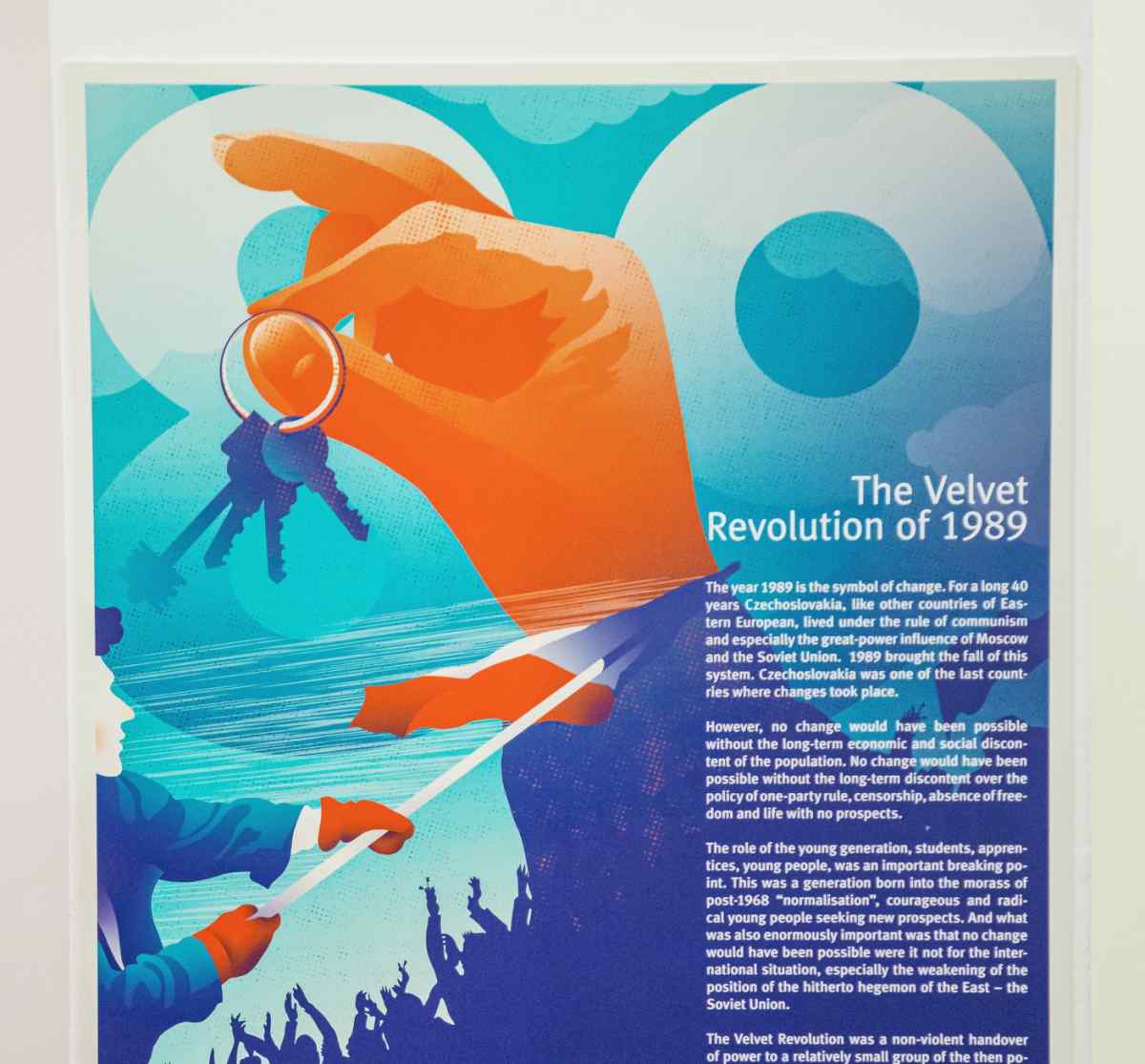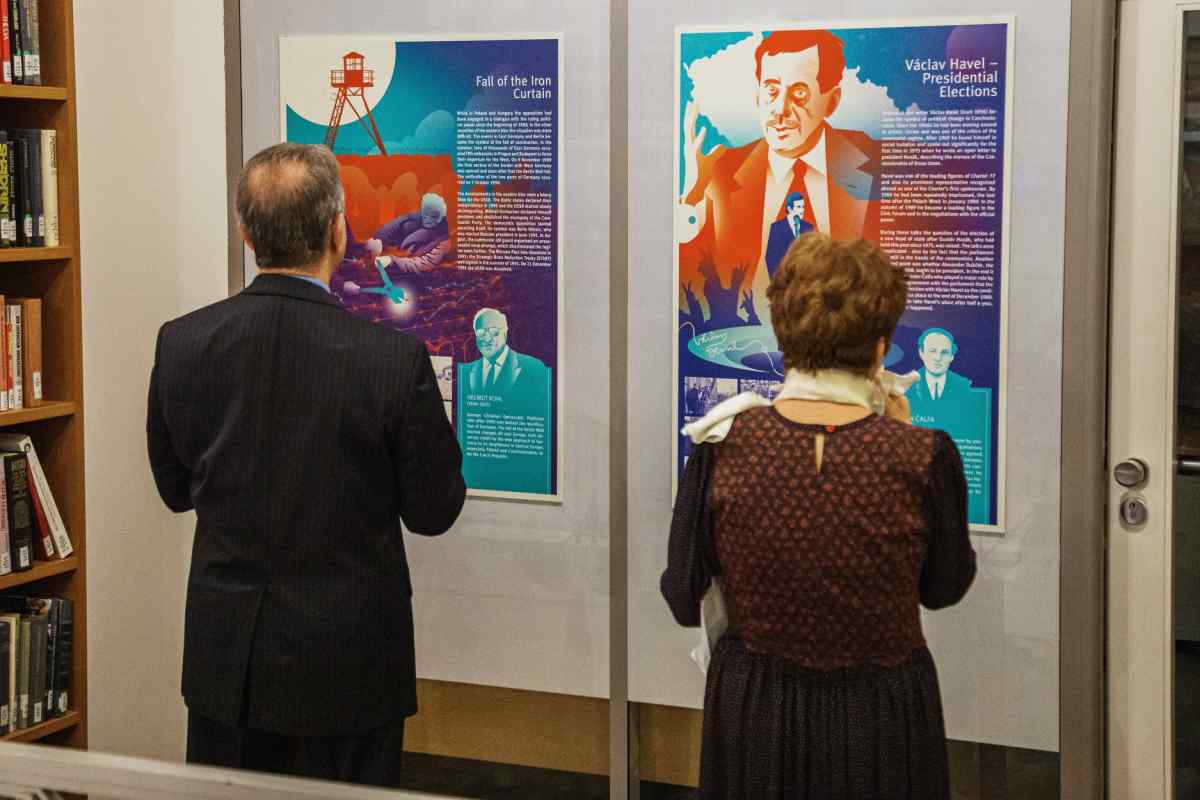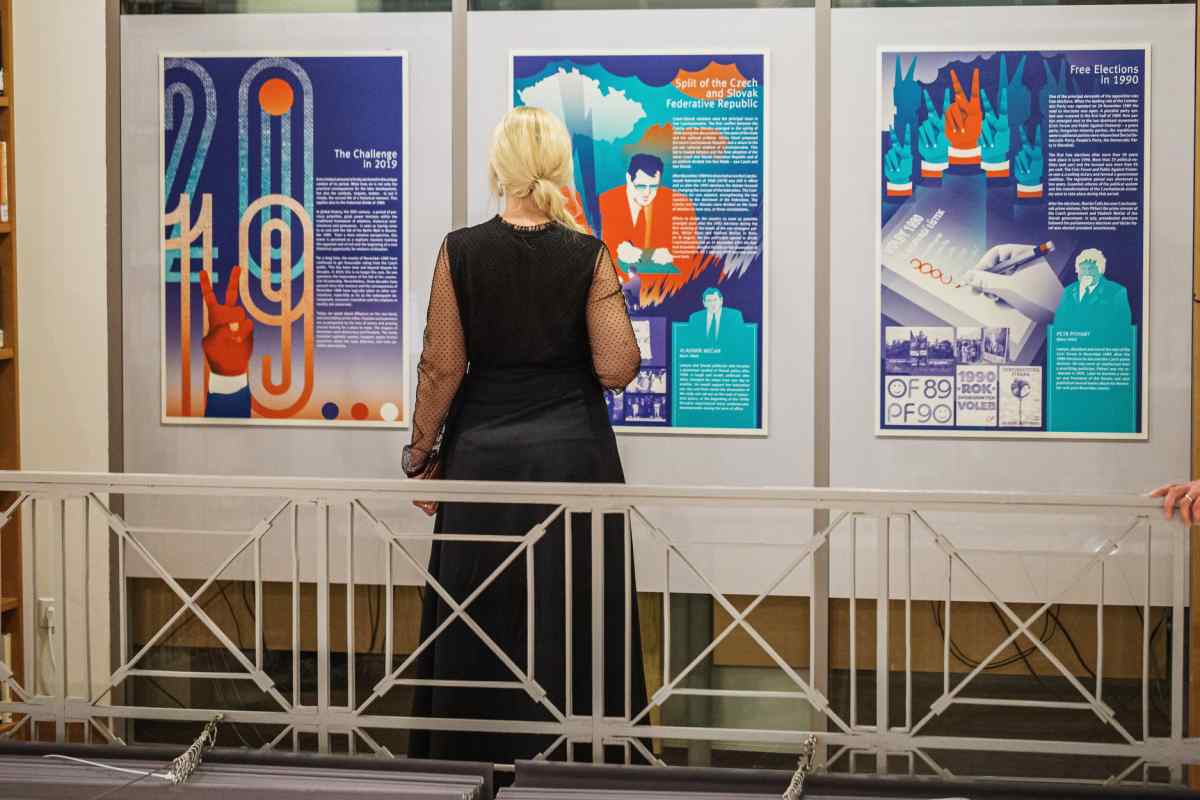The Velvet Revolution 1989
Chamber Exhibition on the 1st Floor



Nemzeti Múzeum, Prága / Prague National Museum
Cseh Centrum / Czech Centrum, Budapest;
Szlovák Intézet / Slovak Institut, Budapest
Szlovák Nemzeti Múzeum / Slovak National Museum
This year we commemorate the 30th anniversary of the Velvet Revolution. The cartoon-like exhibition created by the National Museum, Prague gives an insight into the background, history and consequences of the events that began on the 17th of November in 1989, and presents the most important figures of the era. #Havel na hrad!
The year 1989 is a symbol of change. For a long 40 years Czechoslovakia, like other countries of Eastern European, lived under the rule of communism and especially the great-power influence of Moscow and the Soviet Union. 1989 brought the fall of this system. Czechoslovakia was one of the last countries where changes took place.
However, no change would have been possible without the long-term economic and social discontent of the population. No change would have been possible without the long-term discontent over the policy of one-party rule, censorship, absence of freedom and life with no prospects.
The role of the young generation, students, apprentices, young people, was an important breaking point. This was a generation born into the morass of post-1968 “normalization”, courageous and radical young people seeking new prospects. And what was also enormously important was that no change would have been possible were it not for the international situation, especially the weakening of the position of the hitherto hegemon of the East—the Soviet Union.
The Velvet Revolution was a non-violent handover of power to a relatively small group of the then political opposition, which guided the country to free elections in 1990 under the symbol of the personalities of Václav Havel and Alexander Dubček. Besides them, however, there was also a rising pragmatic economic elite.
The ethos of the revolution is very difficult to explain; for people belonging to different generations it was like a miracle after so many decades. This ethos was ushered in by Václav Havel’s motto: “Love and truth must prevail over lies and hatred” - not a political concept for everyday life, but an ideal of the sense of right and wrong and responsibility for the life of the society.
On view:
Blinken OSA, 1st floor
From November 20 to December 15, 2019, Tuesday to Friday, from 10 am to 6 pm.
Organized by the National Museum, Prague; Czech Centrum, Budapest; The Slovak Institute, Budapest; the Slovak National Museum; The Blinken OSA Archives